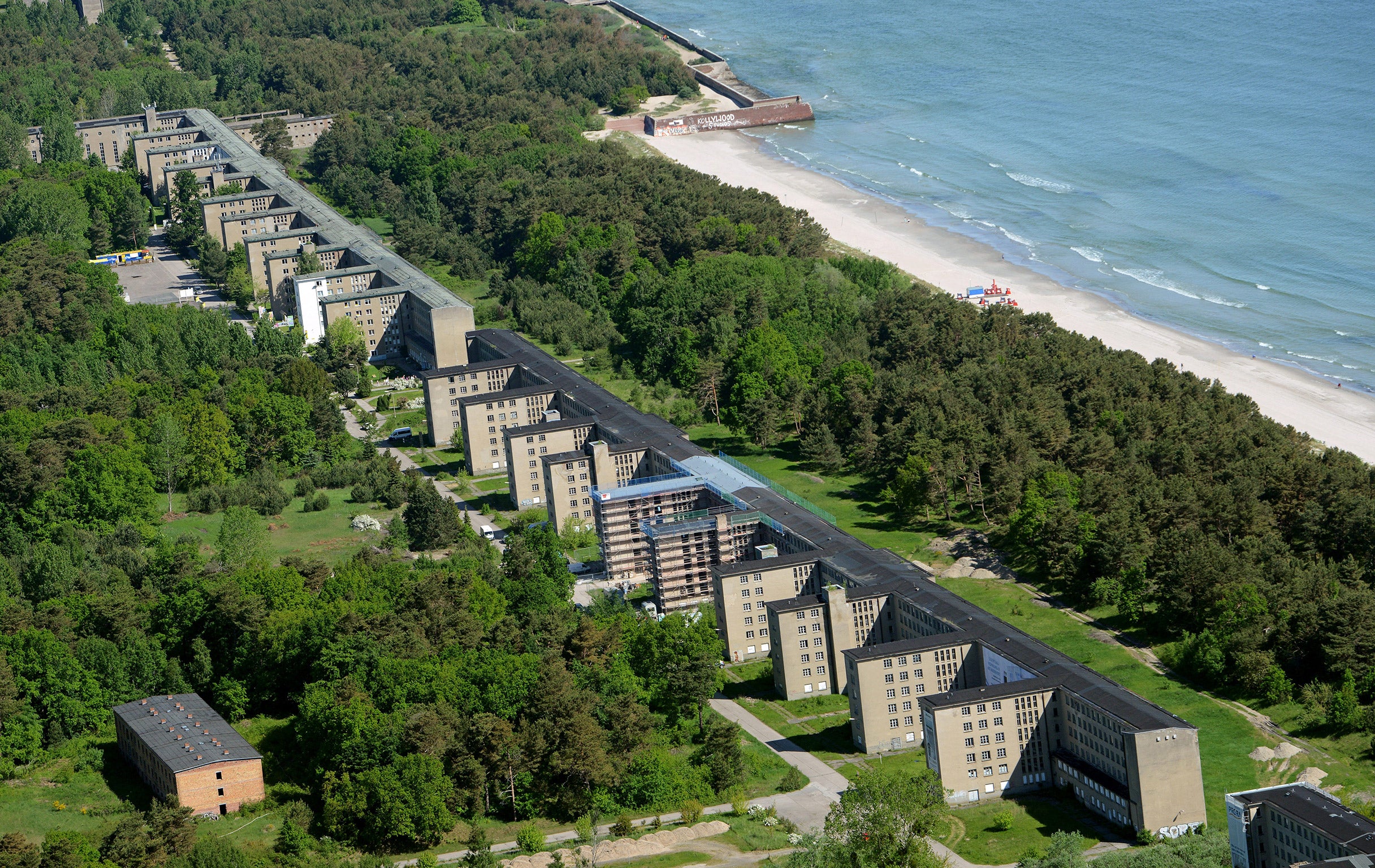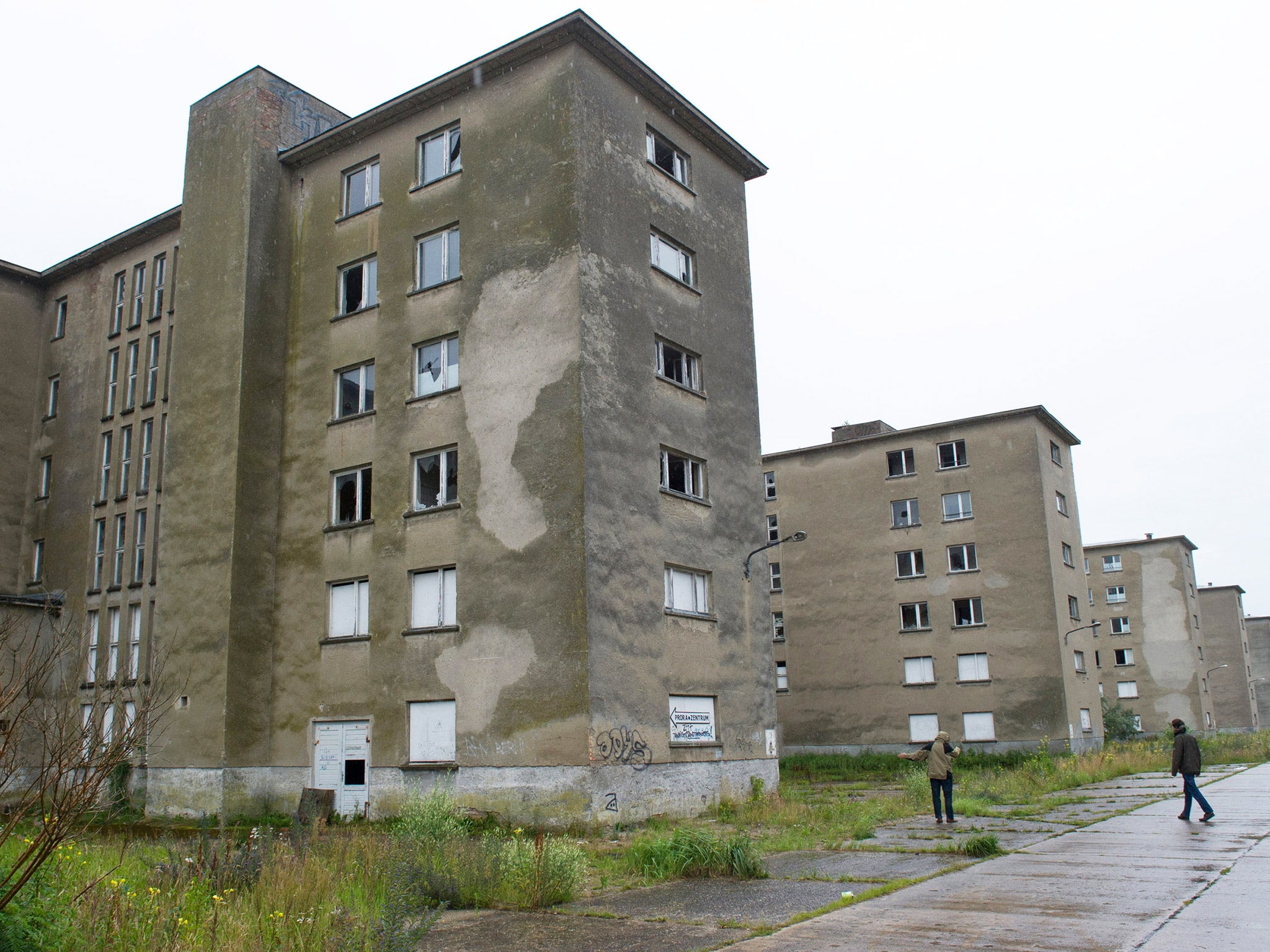Hitler’s holiday paradise is reinvented as condos, hotels and a spa
The 'Colossus of Prora' is finally being rebuilt

Built by the Third Reich in the run-up to World War II, the Strength Through Joy resort was a Nazi vision of tourism’s future. Happy, healthy Aryans would stay and play at the 10,000-room complex on the Baltic Sea, eating, swimming and even bowling for the Führer. Think Hitler’s Cancun.
But 25 years after the fall of the Berlin Wall, the complex nicknamed the Colossus of Prora is part of a growing debate in modern Germany that pits commercialism against Vergangenheitsbewältigung — or the German word for how the country should come to terms with its dark past.
Identical blocks of six-story buildings stretching for 2.8 miles went up before World War II slowed construction, leaving an unfinished hulk that was later retrofitted into training grounds and housing for East German soldiers. But a group of investors in this seaside town is now doing what the Nazis never could: realizing the site’s final stage of transformation into a vacation wonderland. Large parts of the complex are being gutted and rebuilt into developments, including one called “New Prora” that will house luxury beachfront flats - half of which have been sold - as well as an upscale hotel and spa.
It’s not just the cashing in on a major Nazi landmark that troubles opponents. In a sense, some argue, the renovation also is fulfilling the Third Reich’s initial plan to turn the colossus into a massive tourism hub. In promotional material, developers are hailing the original project - whose design is believed to have been chosen by Adolf Hitler - as a “world-famous monument” recognized in its day for “award-winning architecture.” Nevertheless, critics say, their plans also may wash away many of the elements that provided the reason for preserving the colossus in the first place.
“These are not harmless buildings,” said Jürgen Rostock, co-founder for the Prora documentation center. “The original purpose for Hitler was the construction of [a resort] in preparation for the war to come. This way of dealing with the building trivializes it and affirms the Nazi regime.”
The facades of some blocks, for instance, are being brightened by dozens of quaint sea-facing balconies, changing the nature of the imposing, austere architecture that stood as a monument to insatiable militarism. In addition, the one documentation centre at the site explaining the Big Brotheresque Strength Through Joy program - a Nazi effort to provide affordable fun to workers living the National Socialist dream - may be moved to the fringes of the complex and away from moneyed vacationers or, some fear, abandoned altogether.
Without doubt, recriminations of the Third Reich are far and wide in modern Germany, with war-era crime history taught from elementary school onward and a pacifist national identity built largely on a rejection of the past. But the Prora project is highlighting the always-thorny question here of how to deal with the most tangible relic of Germany’s troubled past: Nazi architecture.
In the years after the war, some Nazi-era structures were preserved as monumental testaments to an inhuman regime, while others were pragmatically transformed into offices, army barracks and spaces for other uses. The Berlin stadium built for Hitler’s 1936 Olympic Games is now home to the Hertha Berlin soccer club. The Detlev-Rohwedder-Haus - former home of Hermann Göring’s Ministry of Aviation - now houses a branch of Germany’s Finance Ministry.

Yet opponents in some circles, particularly historians and Jewish groups, are growing increasingly uncomfortable with projects that smack too much of commercialsation or appear to slight history. In Berlin, for instance, a lavish mall opened in September on the site of the former Wertheim department store, a Jewish-owned business whose original owners were dispossessed by the Nazis.
“The site has been redeveloped with abundant references to the glorious days of the department store’s best years but without any display that references the fact that the original owners were forced to relinquish ownership and flee,” said Deidre Berger, director of the American Jewish Committee’s Berlin office.
In the mountainous Eifel region of western Germany, meanwhile, a former Nazi training ground is undergoing a $52 million facelift, adding a convention center and observation deck. The facility’s website suggests a blend of historical remembrance and ecotourism, bluntly stating: “We don’t consider leisure activities and taking a critical look at the history to be irreconcilable.”
After the preservation of so many former Nazi buildings, some also are arguing that enough is enough, saying the time has come to let them waste away or, in some instances, consider tearing them down. Skeptical historians, for instance, are questioning plans in Nuremberg to spend $100 million on the renovation of the Nazi Party Rally Grounds, where Hitler proudly watched marches of his goose-stepping hordes.
“My argument, and the argument of quite a few architectural historians, is: Why renovate such a monument?” said Norbert Frei, a historian at the Friedrich Schiller University of Jena. “One could also give it to a controlled decay. Leave it as is, and allow what will happen to it to happen. It’s in such bad shape that you have to do rather a lot to it. It’s almost like building it anew.”
Enter the Colossus of Prora.
The project was masterminded in the 1930s by Robert Ley, a top Hitler lieutenant. He led the Strength Through Joy effort, which was meant to be a cornerstone of the resort here.
At picturesque Prora, thousands of small, heated rooms facing the sea would recharge the minds and bodies of the German masses, preparing vacationers for life as the masters of Europe. They would enjoy communal meals and common entertainment areas in the embodiment of Nazi fun.
Yet the colossus never lived up to Hitler’s ambitions. Despite the importation of forced Polish labor to help build it faster, the resort became a low priority as World War II raged. It was left unfinished at the war’s end and was briefly claimed by the Red Army before being finished into barracks for the East German military.
After reunification, historic preservationists and other government officials made determinations that the colossus was too expensive and architecturally significant to tear down. So the government sold its various blocks to different developers. A youth hostel opened in part of the complex in 2011. But the complex is now in the midst of a full-blown redevelopment, with the first owners of luxury holiday homes moving in over the summer.
Because the property is considered historic, the German government is effectively subsidizing sales. Prices in the New Prora development, for instance, range from $100,000 to $1.3 million. But buyers subject to German income tax can receive federal credits worth half the purchase price of a unit.
Gerd Grochowiak, managing director of one of the site’s developers, IRISGERD real estate, dismissed critics of the site’s redevelopment, saying he sees nothing wrong with commercialization there.
After all, he said, the structure was “always about tourism, so it doesn’t have such a negative history.”
© Washington Post
Join our commenting forum
Join thought-provoking conversations, follow other Independent readers and see their replies
Comments